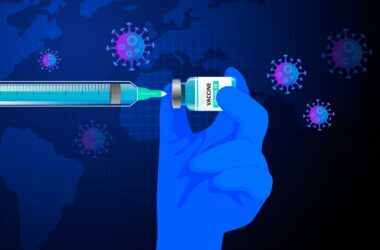The fight against antibiotic-resistant bacteria has reached a critical juncture. Many common infections are becoming increasingly difficult to treat due to the emergence of these resilient bacteria. However, a recent study offers hope in developing a novel antibiotic specifically designed to target a particularly deadly strain.
This newly discovered antibiotic tackles Acinetobacter baumannii, a bacteria notorious for causing serious infections in the lungs, urinary tract, and bloodstream. The Centers for Disease Control and Prevention or CDC suggests that this strain of bacteria poses a significant threat, often leaving patients vulnerable.
Here’s why this development is so promising: Acinetobacter baumannii, also known as CRAB (Carbapenem-resistant Acinetobacter baumannii), has developed resistance to a class of powerful broad-spectrum antibiotics called carbapenems. This resistance makes treating CRAB infections incredibly challenging, with potentially fatal consequences.
The World Health Organization (WHO) recognizes the severity of this threat, placing CRAB at the top of their 2017 list of antibiotic-resistant “priority pathogens.” In the United States alone, CDC data indicates that CRAB infections resulted in an estimated 8,500 infections and 700 deaths among hospitalized patients in that year.
What Does This Finding Indicate?
The emergence of this new antibiotic represents an important step forward in the existing battle against antibiotic resistance. Its potential to effectively combat CRAB infections offers a much-needed weapon in the fight to save lives.
The encouraging news of a novel antibiotic targeting the highly resistant Acinetobacter baumannii (CRAB) shines a spotlight on the urgent need for continued research in this field. While this development offers a ray of hope, it underscores the critical importance of ongoing efforts to battle against the growing threat of antimicrobial resistance (AMR).
Why Is Addressing AMR Important?
Antibiotics have revolutionized medicine, enabling us to treat a vast array of bacterial infections. However, the overuse or abuse of these life-saving drugs has fueled the emergence of resistant bacteria. These “superbugs” have the ability to evolve and render existing antibiotics ineffective, posing a significant threat to global health.
Imagine a scenario where a simple scrape becomes life-threatening due to an untreatable infection. This alarming reality will become increasingly likely if we fail to address AMR. The World Health Organization has designated AMR as one of the top ten global public health threats for humanity.
The Challenge Of CRAB
Acinetobacter baumannii, a particularly troublesome bacterium, has gained notoriety for causing severe infections in the human body. This already challenging pathogen has taken things a step further by developing resistance to carbapenems, a powerful class of broad-spectrum antibiotics. This resistance, dubbed carbapenem-resistant Acinetobacter baumannii (CRAB), significantly complicates treatment options, leaving patients vulnerable and increasing the risk of fatalities.
The newly discovered antibiotic specifically targets CRAB, offering a critical weapon in the fight against this drug-resistant menace. This development highlights the importance of continuous research in antibiotic development.
Beyond The Headlines – Why Do We Need More?
The discovery of a new antibiotic against CRAB is a significant victory, but it’s a single battle in a much larger war. We must not become complacent. Here’s why continued research in new antibiotics remains crucial:
- Evolving Threats: Bacteria are constantly evolving, and new resistance mechanisms are continually emerging. We need a diverse arsenal of antibiotics to stay ahead of the curve.
- Limited Options: The number of effective antibiotics against certain bacteria is dwindling. Continued research is essential to ensure we have options for treating even the most stubborn infections.
- Future Pandemics: The COVID-19 pandemic has illustrated the devastating impact of infectious diseases. New antibiotics could play a vital role in future outbreaks by providing effective treatment options.
Investing In The Future
Research and development of new antibiotics require significant investment. However, the potential benefits far outweigh the costs. Effective antibiotics save lives, reduce healthcare expenditures, and contribute to a healthier global population.
What You Can Do?
While scientists work tirelessly to develop new antibiotics, you can play a part in combating AMR by:
- Using antibiotics under prescription by a doctor: Don’t pressure your doctor for antibiotics for viral infections, as they are ineffective against viruses.
- Completing the complete course of antibiotics as prescribed: Even if symptoms improve, don’t stop taking your medication prematurely. This can factor in the development of antibiotic-resistant bacteria.
- Practicing good hygiene: Frequent handwashing and proper wound care can help prevent infections in the first place.
The fight against AMR is a shared responsibility. By supporting research in new antibiotics and adopting responsible antibiotic use practices, we can all contribute to a healthier future.
Final Thoughts
The discovery of a new weapon against CRAB is a testament to human ingenuity. However, it serves as a stark reminder that the war against AMR is far from over. We must act with urgency and unity to ensure this critical battle doesn’t become a losing war.
By encouraging continued research into new antibiotics and alternative therapies, advocating for responsible antibiotic use practices, and stimulating public awareness, we can create a future where these life-saving tools remain effective for future generations. Let this be a turning point, not a temporary reprieve. Let us join forces – scientists, policymakers, healthcare professionals, and the public alike – to secure a world free from the looming threat of antimicrobial resistance.
[Related Blog: Analyzing The Economic Impact Of Antimicrobial Resistance Trends]













